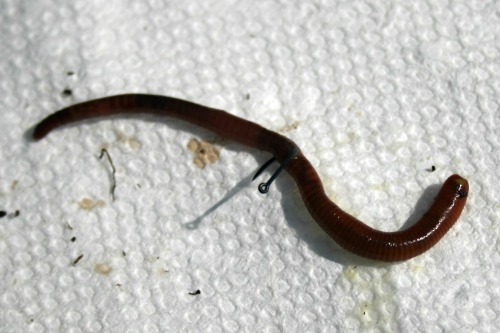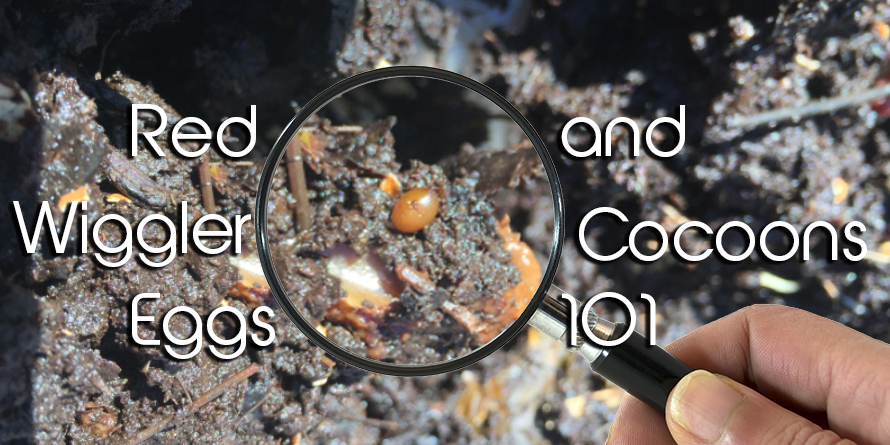Red Wigglers: The Unsung Heroes of Organic Waste Recycling
Red wigglers, or Eisenia fetida, function as crucial agents in the natural waste reusing procedure, transforming discarded materials right into valuable vermicompost. Their efficient breakdown of raw material not only enhances dirt high quality yet additionally adds to sustainable waste administration practices. As the world significantly seeks remedies to deal with waste build-up and enhance farming productivity, comprehending the duty of these worms ends up being necessary. What mechanisms permit them to prosper in garden compost environments, and just how can they be effectively made use of in both property and industrial settings? Exploring these concerns discloses the more comprehensive ramifications of vermicomposting in our ecological landscape.
What Are Red Wigglers?
The remarkable strength of red wigglers, scientifically referred to as Eisenia fetida, underscores their critical function in natural waste recycling. These little, reddish-brown earthworms are usually located in breaking down organic matter, such as compost heap and manure loads. Lake Hickory Bait. Unlike various other earthworm varieties, red wigglers flourish in nutrient-rich atmospheres and are highly efficient at breaking down natural materials, making them necessary for vermicomposting

(Lake Hickory Bait)In addition to their role in waste reduction, red wigglers add to dirt health and wellness by boosting dirt framework and aeration via their tunneling activities (Lake Hickory Bait). Their existence in composting systems not just boosts disintegration prices yet also promotes a sustainable method to throw away monitoring, illustrating their value in ecological preservation efforts
Advantages of Composting With Worms
Composting with worms, specifically red wigglers, supplies numerous advantages that enhance both waste management and soil health. These worms successfully damage down organic waste, transforming it right into nutrient-rich vermicompost that enriches soil. This procedure accelerates decomposition, permitting for a faster recycling of cooking area scraps and other organic products contrasted to traditional composting approaches.
Furthermore, the vermicompost created by red wigglers is bursting with helpful microbes, which help boost dirt framework, oygenation, and wetness retention. This improves the total health and wellness of plants, advertising strenuous development and boosted returns in yards and agricultural setups. The usage of worms in composting lessens the manufacturing of greenhouse gases, such as methane, contributing to a more sustainable waste management system.

How to Begin Vermicomposting
Developing a vermicomposting system is a simple procedure that can generate substantial advantages for both waste monitoring and soil enrichment. To begin, pick a suitable container, such as a plastic bin or wood box, with ample air flow holes to guarantee correct airflow. The dimensions should ideally be around 2 feet by 3 feet, allowing ample room for the worms to flourish.
Next, prepare bedding product, which can include shredded paper, cardboard, or coconut coir. This bed linen must be moistened to develop an ideal habitat for the worms. When the bed linens remains in location, present red wigglers (Eisenia fetida) right into the container, usually around one extra pound of worms for each square foot of surface.
Complying with the placement of worms, include natural waste, such as fruit and veggie scraps, coffee premises, and crushed eggshells. With these steps, you will efficiently launch a vermicomposting system that adds to lasting waste monitoring and enriches your dirt.
Preserving a Healthy Worm Bin
(Lake Rhodhiss Bait)Keeping a worm container growing calls for normal attention and treatment to make sure the wellness of the red wigglers and the efficiency of the composting procedure. Proper upkeep begins with keeping an eye on the dampness levels; the bin should perspire however not saturated. A great regulation of thumb is to maintain a consistency similar to a wrung-out sponge.
Aeration is important as well. Gently mixing the bed linen and food scraps every couple of weeks protects against compaction and makes sure that all worms have access to oxygen. Additionally, it is very important click over here to feed the worms suitably. A well balanced diet plan of fruit and veggie scraps, coffee grounds, and smashed eggshells ought to be provided in moderation to prevent overfeeding, which can bring about odors and parasites.
If the container comes to be also warm or cold, the worms may become stressed. By vigilantly managing these variables, one can maintain a robust and effective worm container.
Effect On Sustainable Living
The effective upkeep of a worm container not only profits the wellness of red wigglers however likewise contributes considerably to sustainable living techniques. By reusing organic waste, such as kitchen area scraps and yard debris, red wigglers assist draw away significant quantities of product from landfills. This decrease in waste not just reduces greenhouse gas discharges yet likewise lessens the environmental concern related to waste administration.
In addition, the spreadings produced by red wigglers act as a nutrient-rich natural fertilizer, enhancing soil health and advertising plant development. This all-natural choice to chemical plant foods supports sustainable agriculture and horticulture methods, lowering dependence on synthetic inputs that can harm communities. In addition, worm composting cultivates awareness of waste monitoring, encouraging individuals and communities to take on even more sustainable routines.

Final Thought
In recap, red wigglers serve as vital factors to natural waste reusing with their efficient disintegration of organic materials. By incorporating vermicomposting into waste management methods, individuals and areas can dramatically decrease waste while promoting environmental sustainability.